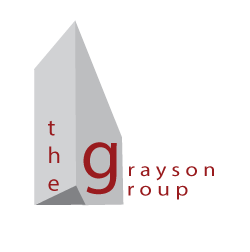What is Commercial Real Estate?

Commercial Real Estate (CRE) is the arm of the industry that includes the sale, purchase, and lease of real estate that is zoned and constructed for commercial use. Investors may graduate to commercial real estate investing or begin investing in commercial assets. It is an advanced level of real estate investing and the returns on commercial real estate can be quite profitable.
The assets included in commercial real estate are primarily utilized for business purposes, although some may be for dual purposes, known as mixed-use. These properties fall into six sectors:
Hospitality: Including hotels, restaurants, and casinos, these properties can be highly valuable to an investor, but also come with high-risk. The businesses that operate out of these properties heavily rely upon seasonal travel and the business and entertainment industry. When robust, the income from hotels and casinos can be exponentially higher than multifamily or office, and the triple net lease for restaurants is also profitable.
Industrial: A single structure on a single lot or a shared lot or complex. Industrial includes warehouses, storage facilities, manufacturing, and flex (research and development) properties. These buildings can be stand-alone or share a wall. These are usually one story and comprised of several thousand square feet, but some can include additional subterranean stories or utilize extensive airspace, like storage facilities. While large companies may own their own warehouses, they often are leased to other businesses, and the large space can be divisible to allow leasing to multiple tenants.
Land: Land in commercial real estate must be zoned for commercial and can be developed, meaning it is ready with utility service lines for building, or raw, meaning it is undeveloped. Land acquisitions for Residual Land Value (RLV) can be profitable. Developer-Investors will assess the highest and best use for the land and its residual value for a certain type of development, multifamily for example. Using standardized assumptions for preferred returns, developers can sell land with Ready To Issue (RTI) permits and design plans for the build.
Multifamily: A structure built on a single lot that has at least 5 units up to large apartment buildings. This one of the most popular types of real estate investing because the returns from income and appreciation can be exponential. With as little as $300,000, an Investor can purchase a property valued in the millions and has returns of $50,000 or more annually. To enter into multifamily investing, many new investors will play the role of Sponsor and raise the capital they need from Passive Investor Partners to acquire the property. This form of investing is called Syndication, and there are multiple ways the Sponsor can add other streams of income for their role as manager.
Office: An office commercial property includes multiple units in one building and may include surface or subterranean parking as an additional source of income. Small office buildings of 2-4 stories may be owned by the business that operates out it, while large office buildings are owned by a group of Investors who lease out individual offices or a full floor. Tenants who lease out multiple floors may be given the right to place their name on the building. Office leasing can be highly profitable as this kind of space is serving as the hub for a business’s operations. The lease terms can be short or long, and Tenants may only pay for their own utilities and insurance, or they may sign a Triple Net Lease (NNN).
Retail: A retail commercial property is one that serves a business for to sell its goods and servicers to the public. This is one of the highly active sectors of commercial real estate and includes shopping centers, mini-malls, clothing stores, liquor stores, and grocery stores. Smaller retail properties may be owned by the business it houses, but the majority of retail properties are leased to Tenant Businesses with a Triple Net Lease (NNN) contract.
Specialty: The specialty sector of commercial real estate includes churches, self-storage, amusement parks. Investors focus on self-storage in this sector, which can not only be profitable, but easy to manage with low expenses. Both individuals and businesses regularly have a need to store personal property, and with low acquisition prices, this sector is a sustainable addition to any Investor’s portfolio.
The Buyers and Tenants of Commercial Real Estate are one or more individuals and investors. The Industrial, Office, and Retail sectors are most commonly leased to a Tenant business using a Triple Net Lease (NNN) contract. The NNN Lease means the Tenant pays for insurance, taxes, and utilities. Passing these expenses onto the Tenant gives them a stronger incentive to be successful and reduces the Investors overall expenses and increases their profits. Another Investor benefit of the NNN Lease is its length. A NNN Lease can be as little as five years, but the most common is 10, and they can be written for 15, 20, and even 30 years for highly qualified brand-name businesses.
To purchase a commercial property, most Investors will work with a Commercial Lender to obtain a commercial purchase loan. The commercial loan differs in many ways from residential loans, with the first one being how the loan is underwritten. The property value, stabilized position, and potential income from leases are what commercial underwriters look at first to fund a commercial loan. And many lenders also fund some or all the cost for rehabilitation or renovation of the asset. Commercial lenders also underwrite the principals who are acquiring the asset. If the principals are experienced, then the loan can be non-recourse, but if the principals do not have much experience, the loan will be recourse for principals only. Partners are not underwritten as long as they are investing less than 20% of the capital to acquire the asset. While rates can be fairly low for a commercial loan product, anywhere from 4%-5% for the traditional lender, or as high as 11% for private commercial lenders, another aspect of the commercial loan is lender reserves requirements. Some lenders require as little as six months of reserves to cover the cost of rents, insurance, taxes, and debt payment, while others may require 12 months. It depends on the position of the asset and the investor’s plans and timeline to stabilize it. With the 2020 Covid-19 pandemic, some lenders required 18 months of reserves and were charging much higher rates and requiring no less than a 60% LTV.
To find out more about purchasing and investing in commercial real estate, visit my Blog. If you are an Investor seeking representation, guidance, and support with your commercial sale or purchase and would like to create an Investing Plan & Strategy, Contact Me today.
Commercial Real Estate Tip
- To quickly find the true value of a property based on stated income and expenses, divide the NOI by your preferred cap rate. This will give you the maximum purchase price of the property. If that price is lower than the asking price, triple-check the income statement, most likely the income presented is proforma, not actual.

Designations, Certifications, & Memberships
- National Association of Realtors (NAR)
- Certified Probate Real Estate Specialist (CPRES)
- Senior Real Estate Specialist (SRES) Certification
- Certified in Introduction to Multifamily Sales
- Short Sales and Foreclosure Resource (SFR) Certification
- Greater Los Angeles Association of Realtors (BHGLAAR)
- BHGLAAR Centennial Club
- California Association of Realtors (C.A.R.)
Keller Williams was originally founded in 1983 by Gary Keller and Joe Williams with the mission to build careers worth having, businesses worth owning and lives worth living. If you are interested in a career in Real Estate, I invite you to learn more about Joining KW!












“Creating wealth through real estate is an art, and requires a pallet, mediums, a canvas, and an environment that allows for creativity. The services and opportunities I provide are all-inclusive of this artistic realm in the local, national, and global economy.”
- Nina Grayson, Realtor®
- DRE 02025042
- 310-383-7393
- [email protected]

- 2701 Ocean Park Blvd., Suite 140
- Santa Monica, CA 90301
- DRE 01499010
- Each office indpendently Owned and Operated
